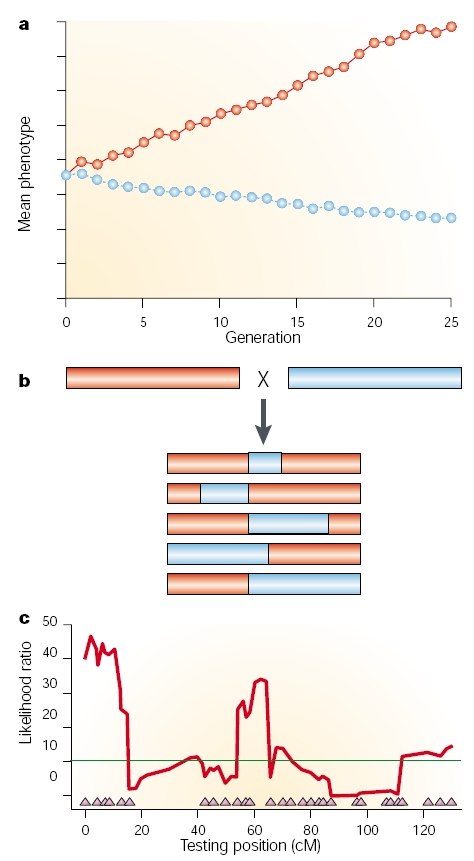Quantitative trait locus mapping
Keywords
Flag Inappropriate
Delete Content

Quantitative trait locus mapping
(A) Quantitative trait locus (QTL) mapping requires parental strains (red and blue plots) that differ genetically for the trait, such as lines created by divergent artificial selection. (B) The parental lines are crossed to create F1 individuals (not shown), which are then crossed among themselves to create an F2, or crossed to one of the parent lines to create backcross progeny. Both of these crosses produce individuals or strains that contain different fractions of the genome of each parental line. The phenotype for each of these recombinant individuals or lines is assessed, as is the genotype of markers that vary between the parental strains. (C) Statistical techniques such as composite interval mapping (Zeng 1994) evaluate the probability that a marker or an interval between two markers is associated with a QTL affecting the trait, while simultaneously controlling for the effects of other markers on the trait. The results of such an analysis are presented as a plot of the test statistic against the chromosomal map position, in recombination units (cM). Positions of the markers are shown as triangles. The horizontal line marks the significance threshold. Likelihood ratios above this line are formally significant, with the best estimate of QTL positions given by the chromosomal position corresponding to the highest significant likelihood ratio. Thus, the figure shows five possible QTL, with the best-supported QTL around 10 and 60 cM.
This image is linked to the following Scitable pages:
What statistical method would you use to analyze complex traits? QTL analysis is particularly helpful, bridging the gap between genes and the phenotypic traits that result from them.





















Comments
CloseComments
Please Post Your Comment